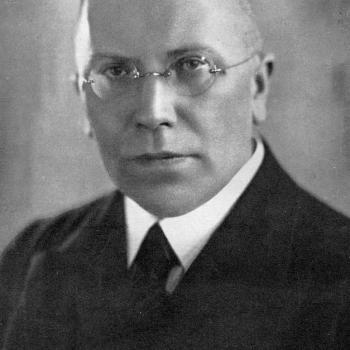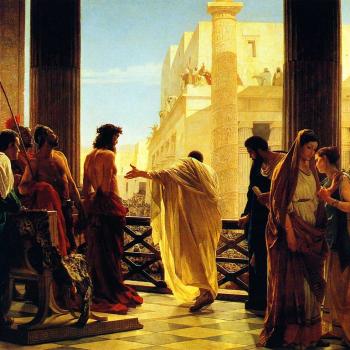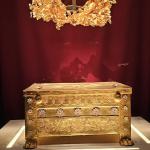We blogged about the excavation of what is believed to be the tomb of Jesus in the Church of the Holy Sepulchre in Jerusalem. When the marble cladding was removed over the place where the body would have been laid, there was a layer of debris. Under that was another marble covering. The researchers removed that, exposing the original limestone burial slab.
The researchers only had permission to study the slab for a short time, but they collected and recorded all the data they could. They continue to study the rest of the tomb. They have determined that the site, which also encloses six other rock tombs, was, in fact, a Jewish cemetery at the time of Jesus.
After the jump, read the latest details. And click the link for PICTURES. (They are copyrighted by National Geographic, so I’d better not copy them here.)
Researchers have continued their investigation into the site where the body of Jesus Christ is traditionally believed to have been buried, and their preliminary findings appear to confirm that portions of the tomb are still present today, having survived centuries of damage, destruction, and reconstruction of the surrounding Church of the Holy Sepulchre in Jerusalem’s Old City.
The most venerated site in the Christian world, the tomb today consists of a limestone shelf or burial bed that was hewn from the wall of a cave. Since at least 1555, and most likely centuries earlier, the burial bed has been covered in marble cladding, allegedly to prevent eager pilgrims from removing bits of the original rock as souvenirs.
When the marble cladding was first removed on the night of October 26, an initial inspection by the conservation team from the National Technical University of Athens showed only a layer of fill material underneath. However, as researchers continued their nonstop work over the course of 60 hours, another marble slab with a cross carved into its surface was exposed. By the night of October 28, just hours before the tomb was to be resealed, the original limestone burial bed was revealed intact.
onal Geographic’s archaeologist-in-residence. “We can’t say 100 percent, but it appears to be visible proof that the location of the tomb has not shifted through time, something that scientists and historians have wondered for decades.”In addition, researchers confirmed the existence of the original limestone cave walls within the 18th-century Edicule, or shrine, which encloses the tomb. A window has been cut into the southern interior wall of the shrine to expose one of the cave walls.
“I’m absolutely amazed. My knees are shaking a little bit because I wasn’t expecting this,” said Fredrik Hiebert, National Geographic’s archaeologist-in-residence. “We can’t say 100 percent, but it appears to be visible proof that the location of the tomb has not shifted through time, something that scientists and historians have wondered for decades.”
In addition, researchers confirmed the existence of the original limestone cave walls within the 18th-century Edicule, or shrine, which encloses the tomb. A window has been cut into the southern interior wall of the shrine to expose one of the cave walls.















